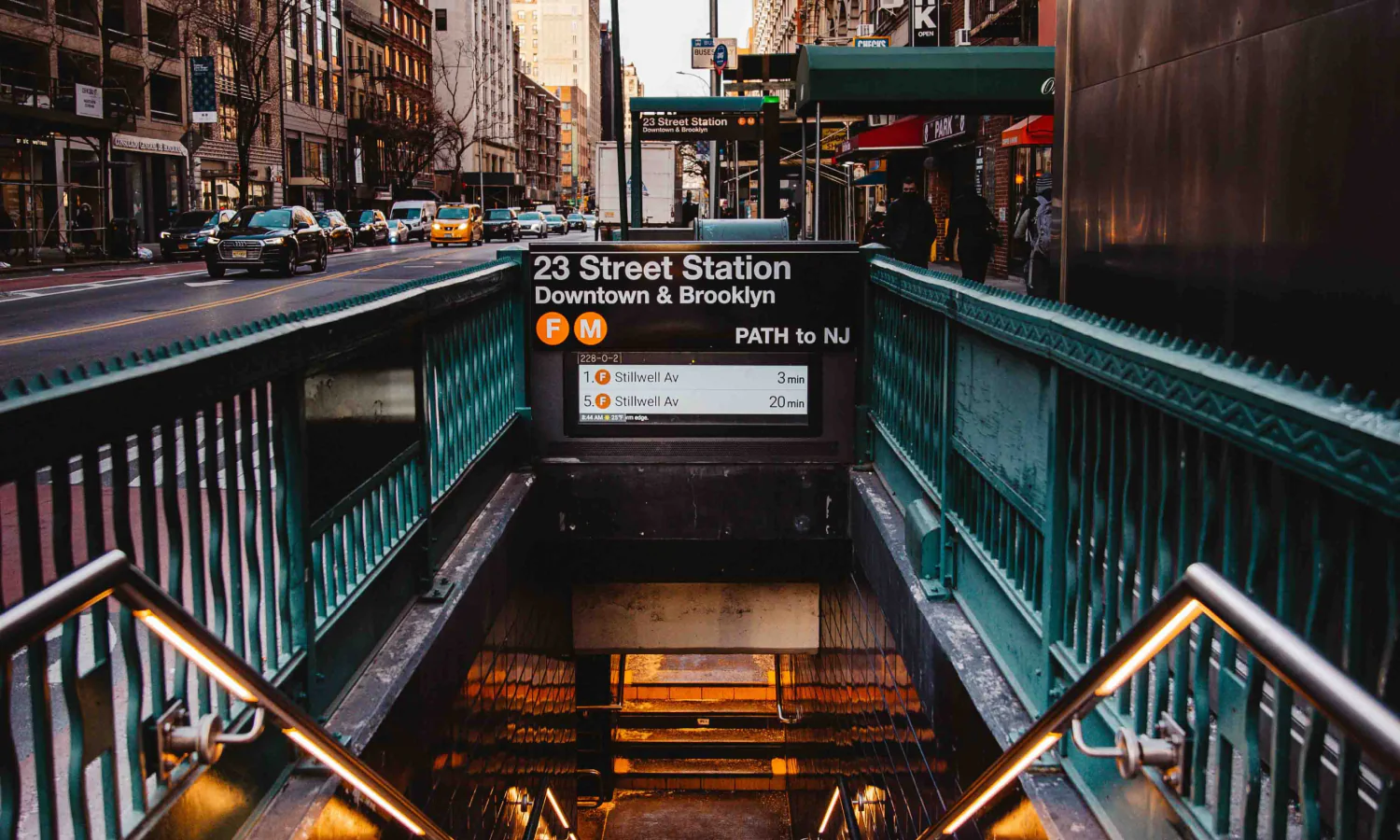
Newsletter Subscribe
Enter your email address below and subscribe to our newsletter
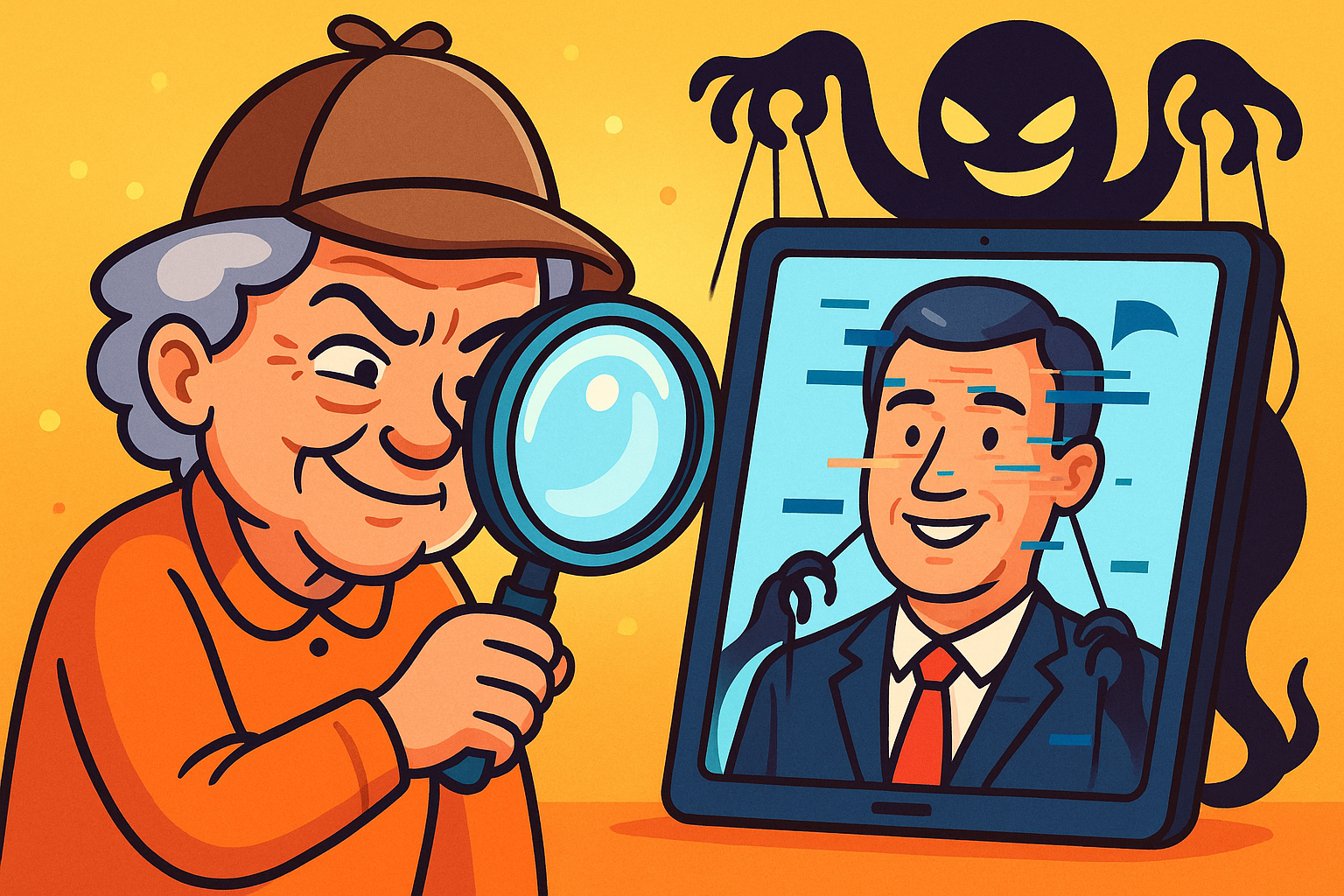
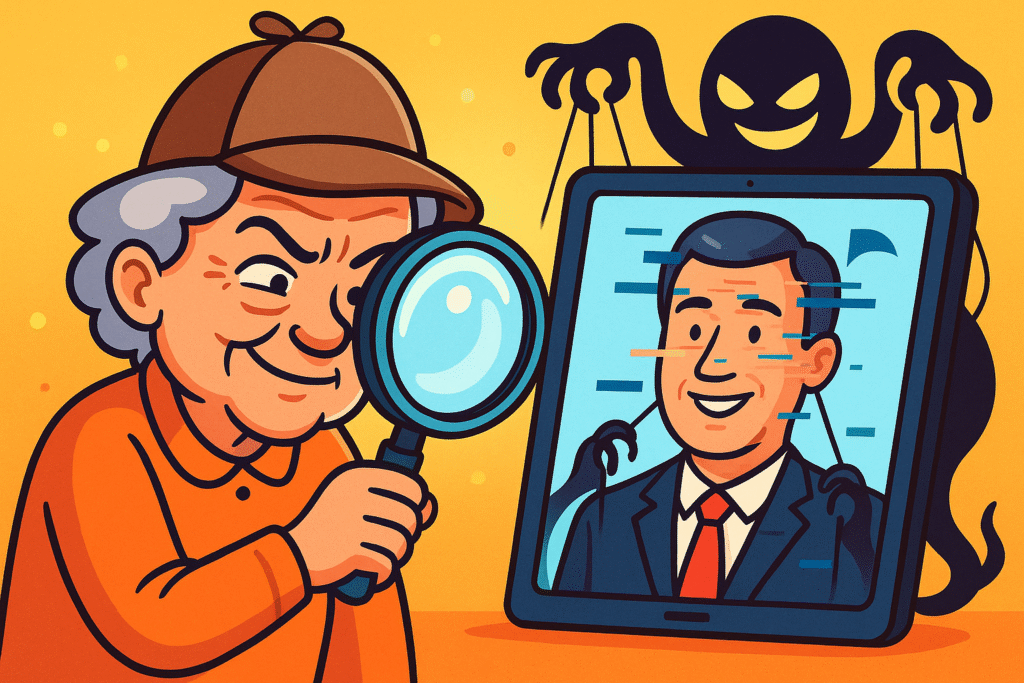
Remember when the most confusing thing about an election was trying to figure out what a “caucus” was?
Or listening to a politician give a 20-minute answer without actually answering the question?
Ah, the good old days. Back then, political mudslinging was a simple art form, usually involving a grainy photo and a scary voice-over.
Today, we’re living in a digital funhouse. You might see a video of a candidate announcing a shocking new policy, hear a recording of them admitting to something outrageous, or read an article that makes your blood boil.
But here’s the tricky part: the candidate may have never said it. The video could be a high-tech puppet show. The recording could be a digital ventriloquist act.
Welcome to the wild world of Artificial IntelligenceArtificial Intelligence (AI) is basically when computers get smart—really smart. Imagine if your c... More (AI) in politics. It’s like someone gave a supercomputer a costume box and a grudge.
But don’t throw your laptop out the window just yet. You don’t need a fancy degree to navigate this new landscape.
All you need is a healthy dose of AI skepticism and a few simple detective skills.
First things first, let’s clear up what “AI” even means in this context. Think of it as a super-smart copycat. You can show it millions of pictures of cats, and it learns to create a brand-new, totally believable picture of a cat that doesn’t exist.
Now, imagine it’s been shown millions of videos, articles, and voice recordings of a political figure.
Suddenly, that copycat can create some serious mischief:
So, who is behind the curtain pulling these digital strings? The motives are usually the same old story: to swing an election, to make money from clicks, or just to sow chaos and make us all distrust each other.
It’s the same old political game, just with much fancier, more confusing toys.
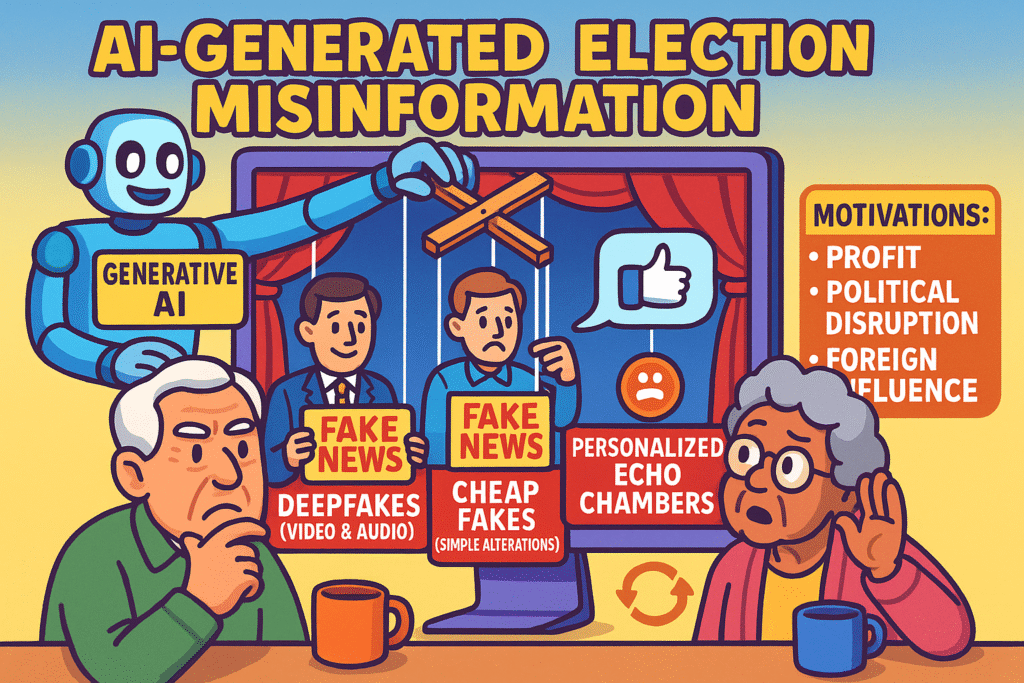
Feeling a little overwhelmed? That’s perfectly normal.
The good news is that you already have the most powerful tool for fighting misinformation: your gut.
If something you see or hear online feels off, too good to be true, or designed to make you furious, that’s your internal alarm bell ringing.
Once your gut tells you to be suspicious, it’s time to put on your detective hat. You don’t need a magnifying glass, just a simple three-question rule.
Before you even think about sharing that shocking article, look at who published it. Is it a news organization you know and trust? Or is it a website with a bizarre name like “The Real Honest Truth Patriot Eagle News”?
If you don’t recognize the source, do a quick search. Open a new tab in your browser and type in the website’s name.
Real news organizations have a history, an “About Us” page, and are written about by other sources. Fake ones often pop up overnight with no real address or authors.
AI is clever, but it’s often bad with common sense. Look for details that don’t add up.
Is a photo of a winter rally supposedly from a Fourth of July picnic? Does the weather in the background match the location?
Think about the person, too.
Is a politician known for being mild-mannered suddenly shouting and using wild language in an audio clip? While politicians do change their minds, a complete personality transplant overnight is a major red flag.
This is where you can spot the digital seams. AI is good, but it’s not perfect.
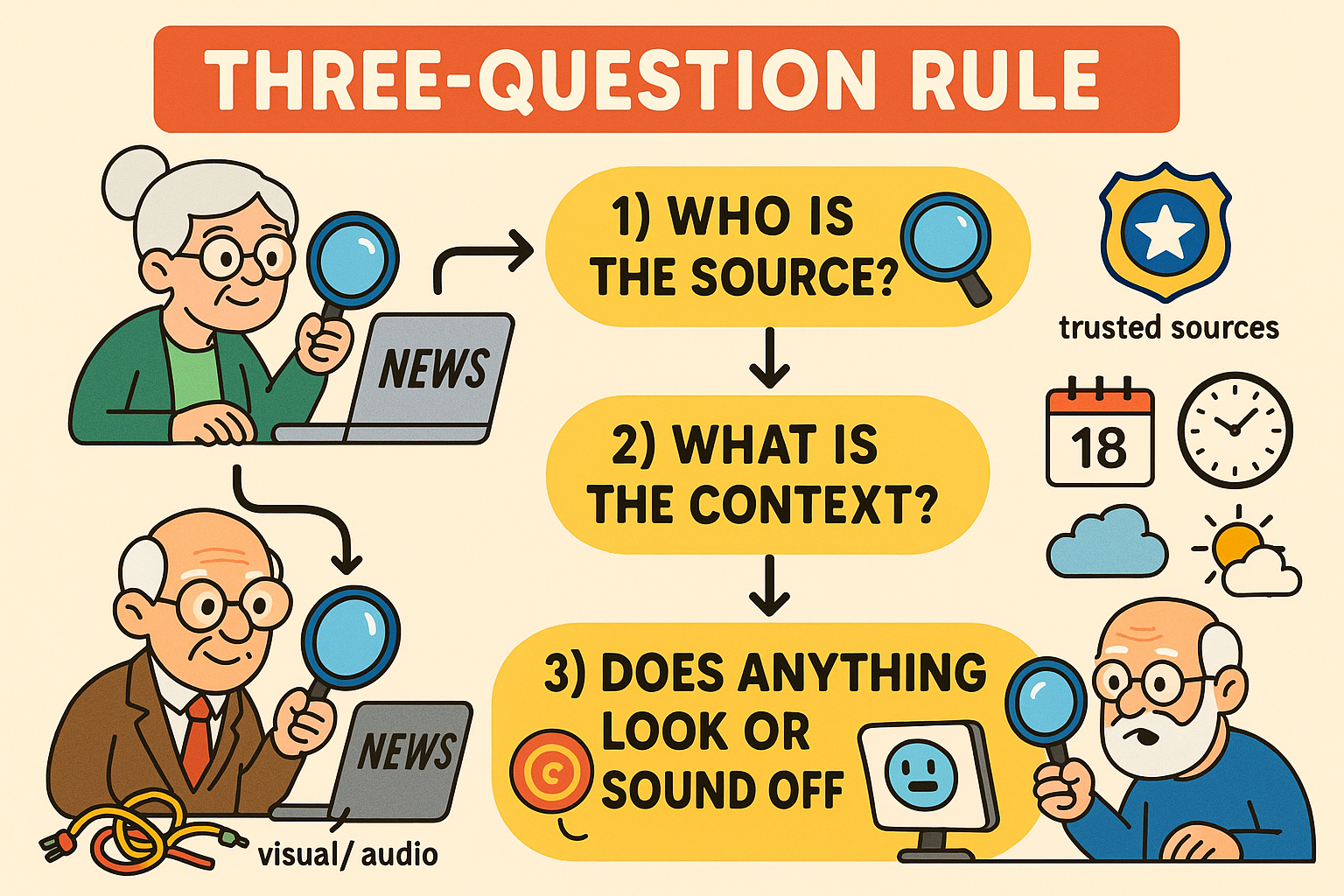
Spotting individual fakes is a great skill, but there’s a bigger, sneakier problem at play called the “Liar’s Dividend.
Here’s how it works: the more we hear about deepfakes and AI, the easier it becomes for bad actors to dismiss real things as fake.
If a genuine, embarrassing video of a politician leaks, they can just shrug and say, “Oh, that’s just a deepfake.”
The goal of misinformation isn’t just to make you believe a lie; it’s to make you distrust everything, so you don’t know what to believe at all.
This is why developing a healthy critical mindset is so important. It’s not about becoming a cynic who trusts nothing. It’s about becoming a discerning citizen who knows how to separate the wheat from the digital chaff.
A few habits can help:
Think of it like the difference between a bad toupee and a Hollywood-grade wig. A regular fake photo might just be edited with software like Photoshop. A deepfake uses AI to create an entirely new or altered video or audio clip that is often much, much more convincing.
Two reasons: it’s gotten easier and cheaper to do. A few years ago, you needed a supercomputer and a team of experts to create a convincing deepfake. Now, the tools are more accessible, which means more people can use them for good or for ill.
People are certainly trying! There’s an ongoing “arms race” between the AI that creates fakes and the AI that tries to detect them. But as soon as a good detector is built, the creators of fakes use it to train their AI to be even better. For now, the human eye and a critical brain are still your best defense.
Not at all! AI is also used for amazing things, like helping doctors detect diseases, creating incredible art, and even making old, grainy photos look crystal clear. Like any powerful tool, it all depends on who is using it and why.
Navigating the news during an election has always required a bit of detective work. Today, the clues are just a little different. The goal isn’t to make you paranoid or to scare you away from technology. It’s to empower you.
By learning to ask a few simple questions, you can protect yourself from being misled and ensure that your opinions—and your vote—are based on the real story. After all, in a world of digital puppets and voice cloners, being a thoughtful, critical thinker is the most powerful tool you have. Now go forth and be wisely skeptical